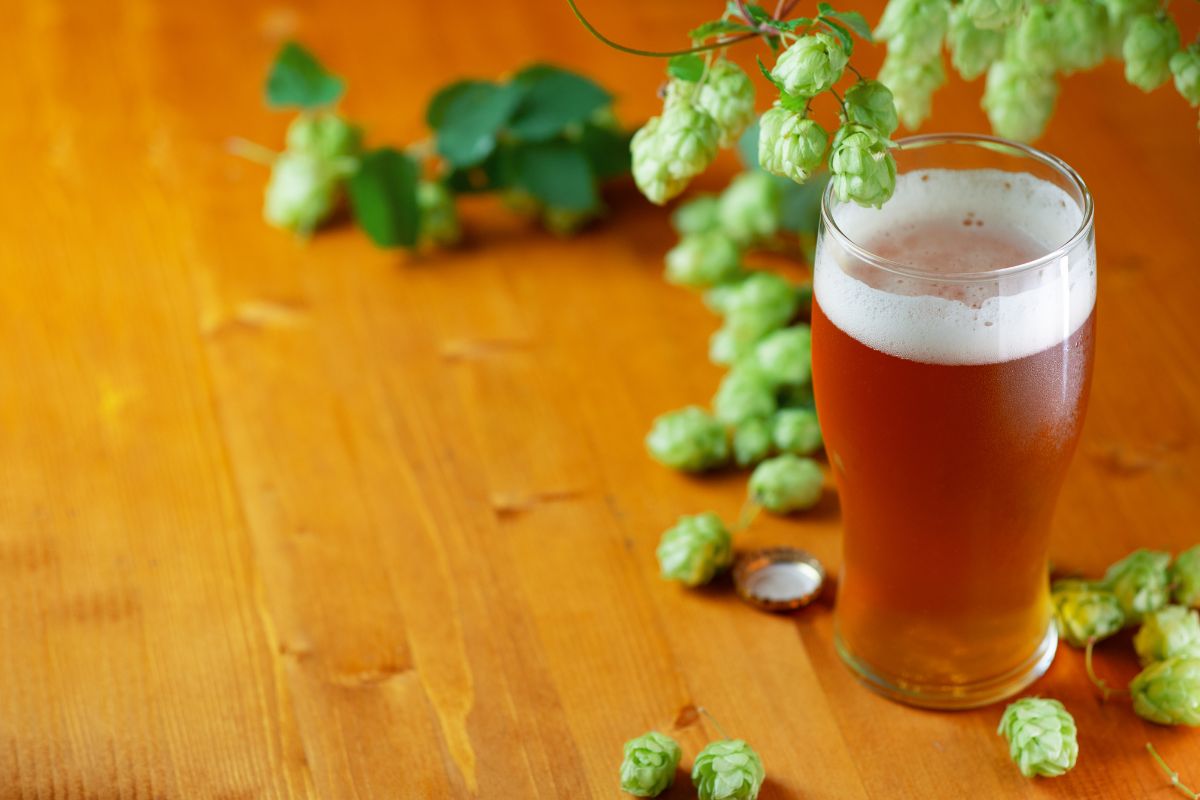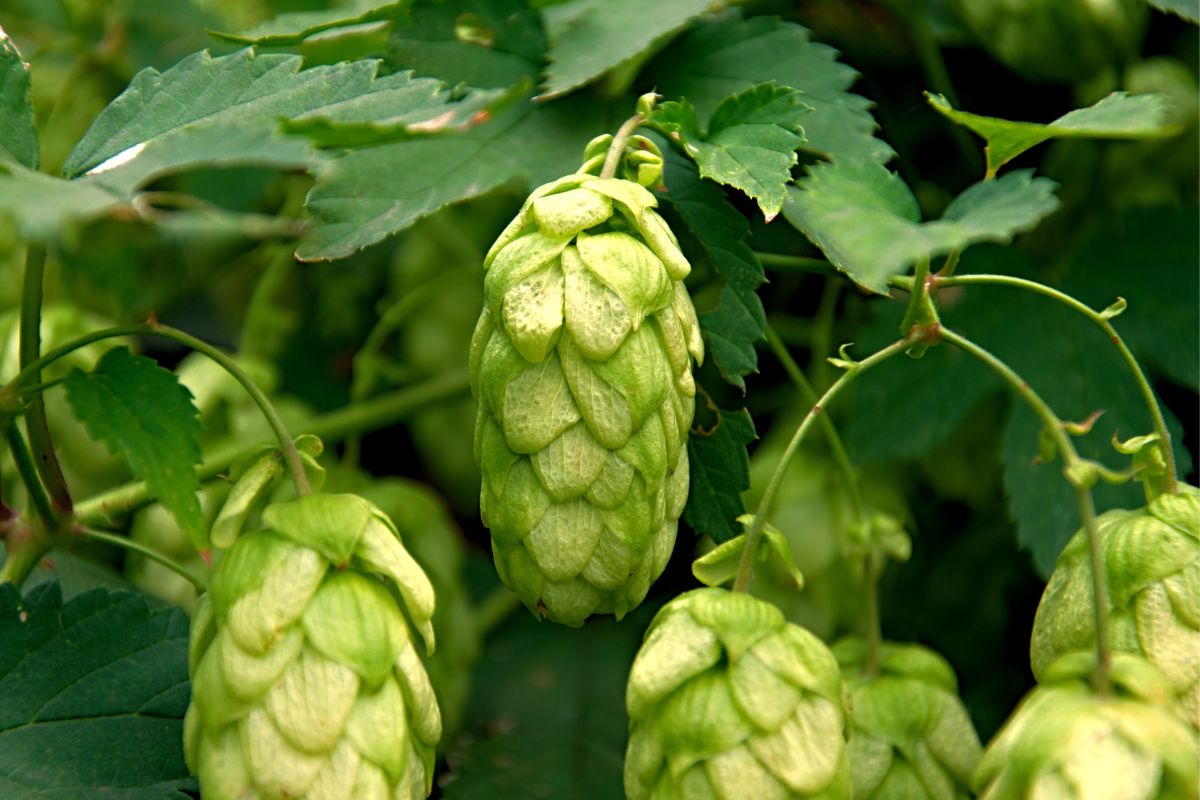With so many subgroups of beer out there, it can be difficult to know what to order at the bar.
If you’ve ever ordered an ale and been given something that’s described as a fresh hop, you may be wondering… what is fresh hop, and how does it influence the taste and smell of your ale?
Well, if you need answers to these burning questions, you’re in the right place. Keep reading to discover the meaning of fresh hop and how it affects the flavor and aroma of your drink.
Fresh Hop Vs. Wet Hop
You’ve probably heard of fresh hops and wet hops, so what’s the difference? Well, surprisingly, these two phrases describe the same thing.
There are no definitive differences between either hop! The terms wet hop, fresh hop, and even green hop all describe a beer that uses unprocessed hops fresh from the bine to brew.
So, if these mean the same thing, then why are some beers called fresh hop while others are not? There’s no real definition for nailing down a fresh hop.
However, brewers tend to use the term only when a beer has been brewed with hops that have been off the bine for under 24 hours – hence the term ‘fresh.’
If you want to be more specific, the Brewers Association’s Beer Style Guidelines now define fresh hop beer as an ale that has been brewed using only freshly harvested hops.
These hops could be fresh or frozen, or even pellets or cones that have been freshly kilned dried.
What Are Hops?
If you’re still a little confused, let’s go back to basics – what exactly are hops?
Well, hops are a type of green flower, often cone-shaped, and they’re a type of climbing, flowering plant that brewers love.
Inside the distinctive cone on each hop is a small yellow pod called a lupulin – it’s here that you’ll find all of the aroma and bitterness used in beer.
Hops are grown all over the world, but the most common producers are New Zealand, North America, Germany, and the Czech Republic. Hops tend to prefer warmer climates that have plenty of sunshine and rich soil.
Lupulin is what every brewer wants from their hops. Not only does lupulin give beer its distinctive flavor, but it also helps balance the taste of the malt and the other oils needed to give beer the taste that we know and love.
Hops are usually added during the ‘hot side’ of the brewing process to help release more of the bitterness in the beer.
Hops are also usually thrown in near the end of the hot side process to create certain flavors and smells distinctive to their beer.
How Should Fresh Hops Be Used?
Fresh or wet hops have not made it through hop oil analysis. This means that it’s impossible to tell exactly how much oil is present in the hops.
Fresh or wet hops will also not have been dried, meaning they can weigh up to five times more than a dried hop.
This is something that brewers need to take into account – if you’d usually use an ounce of dried hop, you’ll need five ounces of wet or fresh hop to give your beer the same flavor and smell.
Fresh hops are incredibly versatile, and they can be used at almost any stage of brewing. Whether you want to dry hop, boil them, whirlpool, or mash them, you can do plenty of things with your fresh hops.
However, just because you can do whatever you want with them doesn’t mean you should. Wet hops should usually be used at the end of a boil, with dried hops being used at the beginning.
This process tends to bring out more flavor and aroma, and brewers worldwide prefer it.
Beer And Ale: What’s The Difference?
Ale and beer are both popular choices at your local bar, but what’s the real difference between the two?
Beer and ale start out the same way, with barley (or another grain) that’s malted, sprouted, and dried. Brewers will then add yeast to ferment the drink, which should be done before the malt spoils.

At this part of the process, other ingredients, including hops, are included to improve the beer’s flavor and reduce some of the bitterness in the malt.
The main difference, though, is that ale is fermented at a much higher temperature than beer. So, what does this mean for the drink?
When the ale is fermented at a higher temperature, it matures faster. The yeast in the ale will rise faster than it would in beer, which creates an infamous froth on the beer cask.
Other drinks like lager are fermented at lower temperatures, which means the yeast moves to the bottom and stays there as the beer matures.
Because ale and beer are brewed differently, they usually have different tastes. Ale is often described as being ‘hoppier’ with higher alcohol content.
Some drinkers say it’s also far richer than other beers, such as lager. Although the taste of beer can vary, it’s usually smoother and milder than ale.
To alleviate any confusion, let’s make one thing clear: ale and lager are two subgroups of beer. These subgroups can be further divided into other classifications, such as stouts, bitters, porters, and more.
The Bottom Line
The next time you hear of a ‘fresh hopped ale’, you’ll be able to pin down exactly what makes a fresh hop and what makes an ale!
Your fresh hop ale is simply an ale that uses fresh hops. It really is that simple.
Although the definition of a fresh hop varies, it’s usually classified as a hop that’s used in brewing no more than 24 hours after it has left the bine.
So expect plenty of crisp flavors and aromas, and maybe even a tickle of bitterness. We love a fresh hop ale, and we hope you do too!

